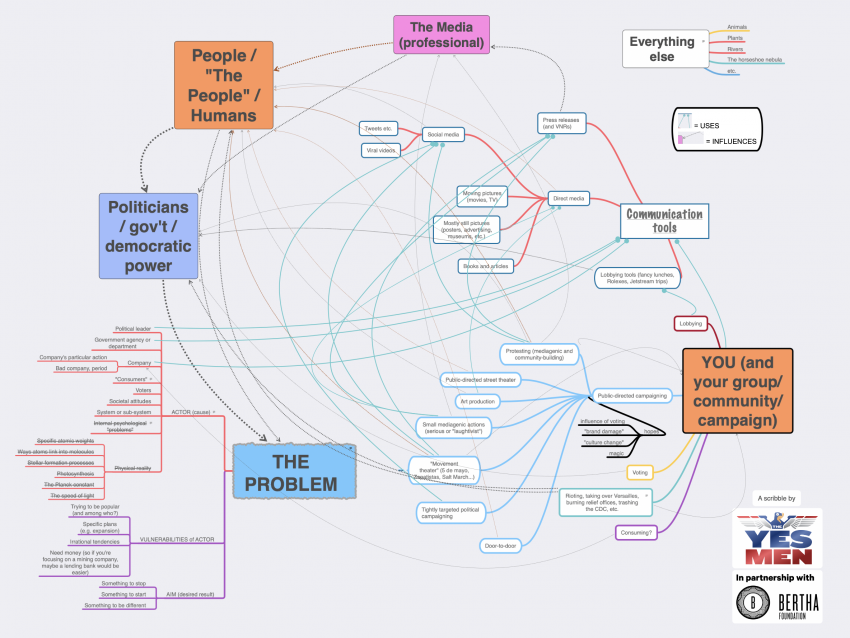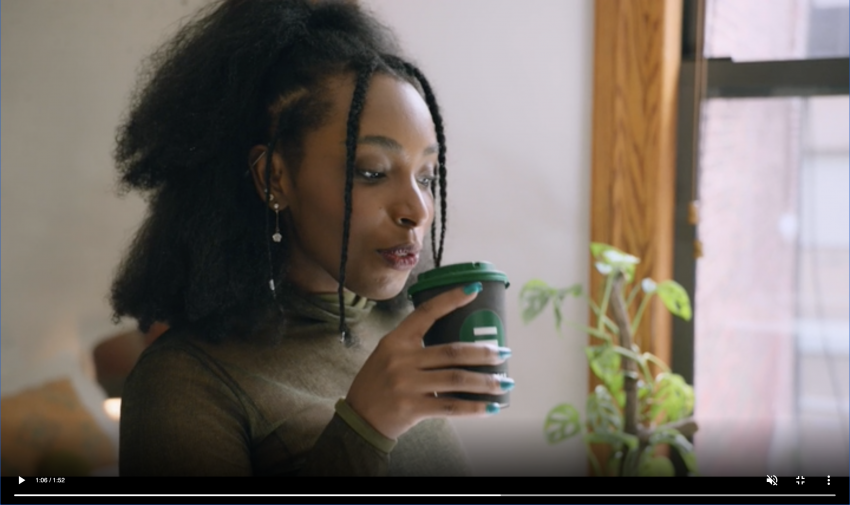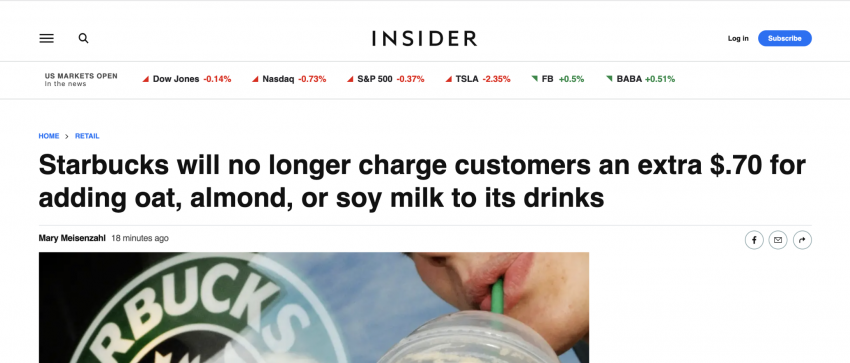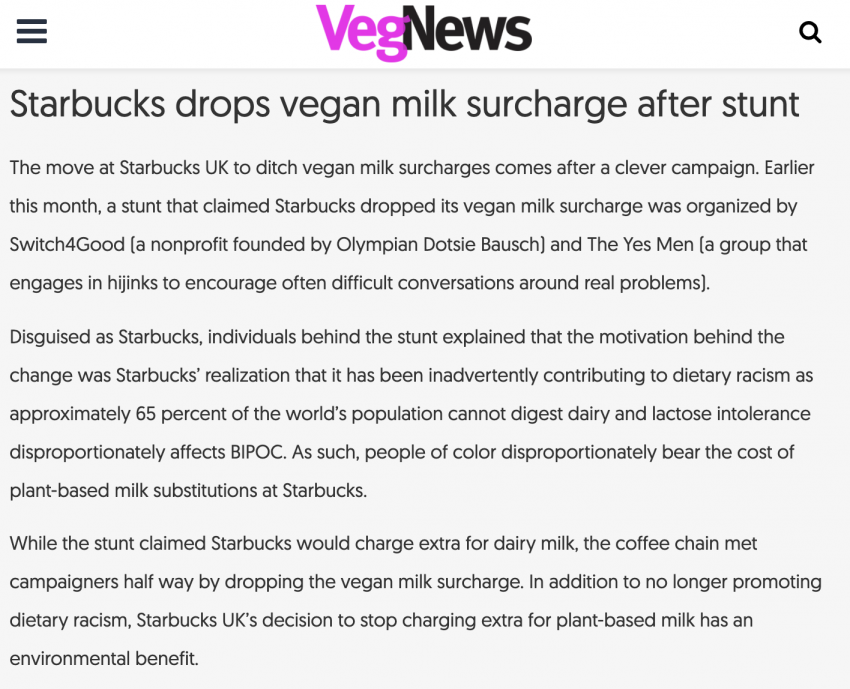If you can't make it to the carriage trade gallery before the show closes on March 27, join online this Monday, March 21, for a gallery walk-through and conversation. Free!
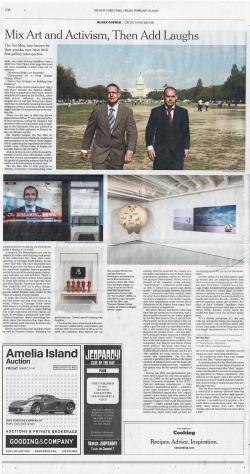 In December, an excellent little art gallery put together a "retrospective" of our old and new artifacts, which the New York Times reviewed in a wonderful, insightful full-page piece. (See full list of press here.)
In December, an excellent little art gallery put together a "retrospective" of our old and new artifacts, which the New York Times reviewed in a wonderful, insightful full-page piece. (See full list of press here.)
We love praise, especially when it's insightful and brilliant! But though we use artistic techniques, and have been called artists before, we've often rejected the term "artists," because our "bottom line" is so specific. In the tradition of ACT-UP's Gran Fury, we've never cared much what the art world thought of us; we've wanted our projects to accomplish specific political things, and have used all sorts of mischief to get there.
Creative people have long used trickery to attempt change. If that's art, this is art. And our particular species of art is to highlight information that ought to be better known, by giving journalists an excuse to write about critical things they couldn't ordinarily cover merely because they're important.
Such things might be barely known to the public (like, in 2004, Dow Chemical's acquisition of mass-death-causing Union Carbide), or they might be pretty well known but needing an extra bump up in the media (like New York's racist policing practices).
We've rarely (with some exceptions) tried using trickery to promote or attack a politician, and at this point it's probably not a great idea to do so. The notion of trickery has been so thoroughly discredited by conservatives that "trickery for good" is now impossible in politics, and insisting "our" version is different will surely come off as a nicety.
But "our" version is different. Unlike unscrupulous liars, the Yes Men and others never fool anyone for very long (or, sometimes, at all). Briefly fooling one outlet of stature, like Business Insider, can help amuse other journalists when we quickly reveal the hoax — but the goal is always to get new true information out there. That also serves the goals of journalism, so most journalists tend not to mind a bit of theatrical humor along the way — even when they themselves have been tricked!
We made the below diagram (and walk-through) to help ourselves think through how mischief can help create change in a democracy. In short, media or other attention can affect public opinion, which in a democracy influences corporate or government behavior. It can even, in the very best cases, help to change culture or (even!) the law.
Note the emphasis on "democratic situation." During the last US administration, we tried a few things, but then realized that everything wrong with the administration seemed to already be obvious, and no amount of public knowledge seemed to deter them or their fans. That's near-fascism for you!
In 2022, however, with an administration that's located roughly on the earth we all share, there are many ways to exert pressure all the way to Washington — and that's what we must do. (And, of course, local issues can always be acted on regardless of what's happening at the top.)
An example of spontaneous mischief that worked
In 2008, a Utah church group was protesting an auction of public BLM land to the oil industry. One of the protestors, Tim DeChristopher, decided to go in and disrupt the auction. But as he strode in, one of the gatekeepers asked him if was there to bid on the auctioned parcels. After a split second of hesitation (during which, he tells us, he thought of the Yes Men), he said yes. The gatekeeper gave Tim a bidding paddle, and once inside, he began bidding on 14 parcels of land, soon pushing the bids beyond the reach of other buyers. When the auctioneer understood what was happening, the auction was halted for the day — and then permanently, thanks to a court injunction. In other words, Tim singlehandedly saved hundreds of thousands of acres of Utah public land from turning into just that much more fuel for climate change. (Tim also went to prison for 21 months, because he refused to plead guilty and insisted on a trial by jury.) Read more about this amazing bit of mischief on Actipedia, a collection of thousands of examples of creative activism, some of which achieved lasting change.
Our projects haven't tended to be quite as… risky. And as you can see on our press pages, they haven't always succeeded in making change. But sometimes they've worked out pretty well — and with our latest success, we decided to figure out why.
One recent example of (safe) mischief making change
Late last year, Switch4Good, an anti-dairy group, decided to target Starbucks for charging extra for plant-based milks, and they approached the Yes Men for help using trickster techniques. We helped develop the idea and overall plan, and we also helped calm the activists' nerves, but the team did the hard work themselves — and they won! Why?
- The activists had a motivated, talented, and creative team, as well as a fearless leader.
- They had a clear, achievable goal — to force Starbucks to drop plant-milk surcharges.
- They had a surprising new angle on the issue, that hadn't gotten much exposure.
- They'd chosen an excellent target, since Starbucks wants to be seen as progressive and is thus vulnerable to attack from the left.
In more detail....
Though Switch4Good was opposed to dairy for the usual environmental, ethical, and climate-change reasons, for this project they wanted to focus on a different angle — that since only people of Northern European extraction can majoritarily tolerate dairy, charging extra for plant-based milk constitutes "dietary racism." It was problematic that most of the core team were of Northern European extraction, but problems are par for the course with this stuff.
After a couple of brainstorms, we settled on an approach: we'd mirror an old Yes Men project, Coal Cares, in which the coal industry announced they were fixing coal-caused childhood asthma by providing free decorated inhalers to children — but we'd make it more positive.
Ta-da, StarbucksCares! The team built a website, and embedded a clever video that began with "Starbucks" acknowledging the prevalence of lactose intolerance among everyone except whites.
"Did you know that the milk we drink is tearing us apart?" said the narrator — before announcing "Starbucks's" decision to drop plant-milk surcharges and to charge more for dairy instead, as a way of "bringing us together." The video went out to thousands of journalists accompanied a press release. The calibre of the writing, the video, and the website, as well as the concept's credibility, meant that Business Insider and four other outlets fell for the hoax.
It was only a matter of time before Starbucks would deny it — so after a tension-filled hour, we preempted them with a fake Starbucks denial, in which Starbucks awkwardly admitted the (true) fact that they've "known about ethnicity-related lactose intolerance for many years" before asserting (accurately) that "changing our pricing policy… is not in our racial-equity plans, nor will it be."
Finally, as always, we issued a "reveal" release, informing everyone of the hoax and the reasons we'd done it. Dozens of outlets covered the hoax, raising thorny issues for Starbucks — so thorny they caved, at least in the UK.
Just as importantly, the campaign spread the new "dietary racism" concept.
This was one of thousands of examples where a bit of creativity — aka plagiarism with a twist — led to a good result!
Convinced! How to get started?
The first step is to figure out what you want to communicate. Ask yourself two questions:
- Is there some important information that not enough people know about?
- Will getting that information out there make a difference? If you succeed to your heart's delight, how will that change things? (It's ok to have only a vague idea — but some idea is necessary.)
The next step is to think up a stunt — here are some pointers. (Basically, steal it!)
Now, make a plan — here's how we think that can work. And the rest of our Book of Tricks has a bunch more things we've figured out about doing this. You might also want to check out some of the lessons we've learned.
This stuff isn't rocket surgery, and is cheap and pretty safe. You can just do it! But we're also happy to help with ideas and reassurance, i.e. coaching. Read over that page and then contact us to get started. Once you've done mischief with us looking over your shoulder, you'll be able to do it again on your own.
And if you really think mischief is right for your project, but for some reason don't want to get your hands dirty — despite how fun and how safe it is — read this page. We have limited bandwidth, but you never know!
A version of this post was published on Democracy Labs. And yes, this is basically an ad for mischief!
